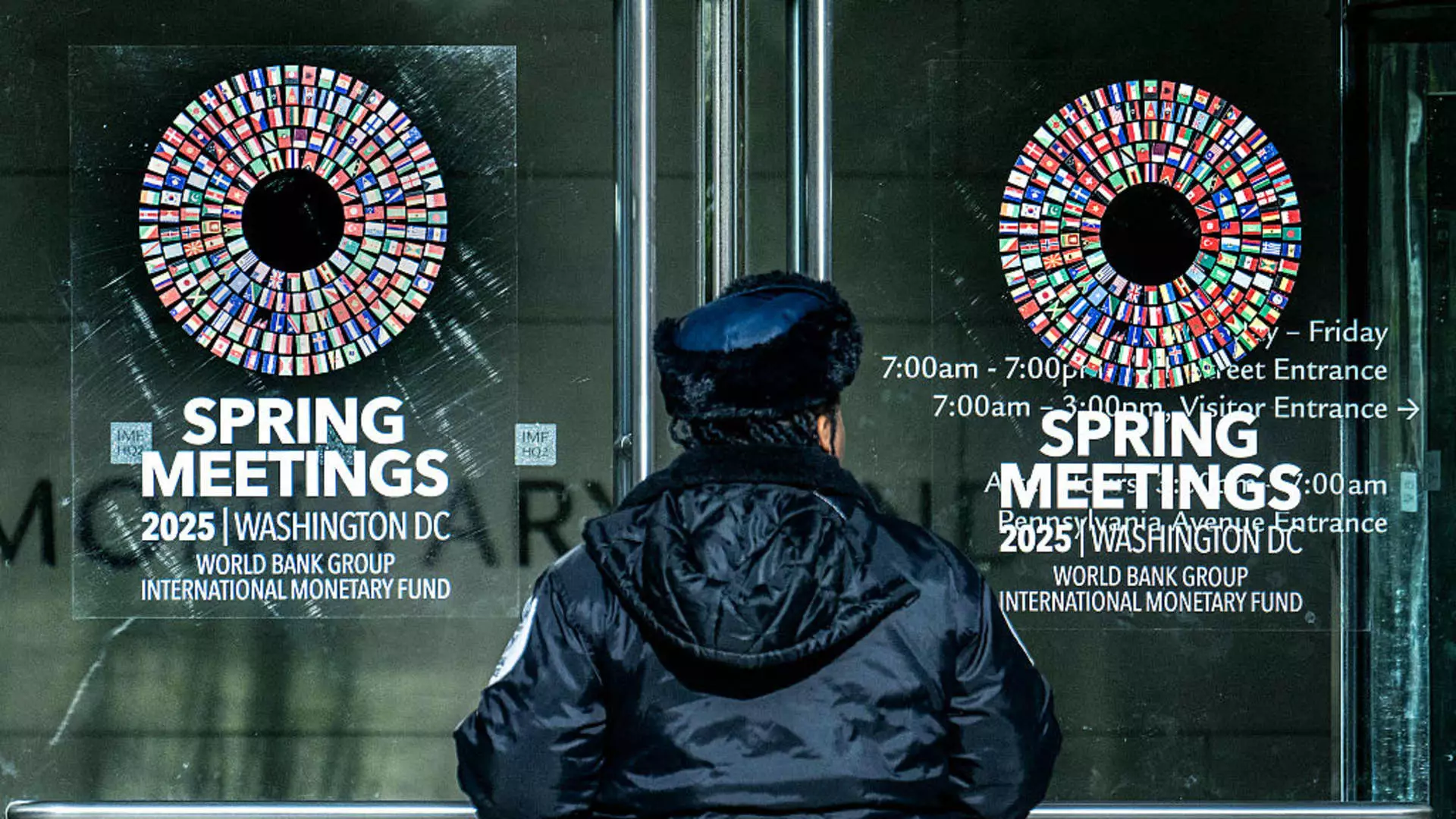The recent downgrade of growth forecasts by the International Monetary Fund (IMF) serves as a stark reminder of the precarious state of major Asian economies. The IMF effectively slashed its projections for China and India, predicting a mere 4% and 6.2% GDP growth in 2025—significantly lower than earlier estimates. This downward adjustment not only highlights the fragility of these economies but also exposes the lingering effects of trade tensions and a climate rife with policy uncertainty. The mainstream narrative often casts these nations as economic giants, but the IMF’s figures unveil a darker underbelly of vulnerability that cannot be ignored.
The new forecasts reflect a systemic issue rather than mere annual fluctuations. The IMF’s observations regarding unyielding tariffs and retaliatory measures between the United States and its trading partners raise alarming questions about the efficacy of current economic policies. Historically, trade wars have harmed not just the parties involved, but also have reverberating effects on global economic dynamics. The sweeping tariffs enacted by the U.S. administration, which have reached exorbitant levels, are no longer just bargaining chips; they have morphed into significant roadblocks to growth.
India and China’s Economic Hindrance
In recent years, both China and India have showcased resilience and remarkable growth trajectories. However, current forecasts suggest that both nations face a deeply troubling reality. With China’s official GDP growth target at “around 5%” for 2025 — a figure now viewed skeptically by economic analysts — there’s cause for concern. India, heavily reliant on foreign investment and trade, faces a similarly grim landscape, navigating through the turbulent waters of global economic instability. Since taking office, U.S. President Trump’s trade policy has disrupted traditional markets and alliances, intensifying the uncertainty that inevitably stymies growth.
The ramifications of these policies are not mere statistics on a spreadsheet; they represent potential layoffs, stunted innovation, and decreased consumer confidence. While the official response from both nations has leaned toward accommodating discourse at the international level—with Japan seeking a conciliatory negotiation strategy and India’s Prime Minister Narendra Modi meeting U.S. officials—it raises a crucial point: Are these diplomatic overtures too little too late? The reality is that without substantial shifts in trade policy, both countries might find themselves stagnating while their competitors gain momentum.
The Ripple Effect Beyond Borders
As the IMF scales back expectations for Asia’s growth, the impacts will not be confined to regional borders; they have far-reaching consequences for the global economy. The IMF anticipates global growth to plummet to 2.8%—a stark deviation from earlier forecasts. In an interconnected world, economic turbulence in major Asian economies results in ripples across global markets, affecting trade partnerships, investment flows, and even consumer behavior.
The widening chasm brought about by trade wars and escalating tariffs acts as a blight on economic progress. Countries reliant on exports may soon find their marketplaces dwindling, leading to a domino effect of reduced economic activity. Moreover, public sentiment surrounding these geopolitical skirmishes tends to skew towards protectionism, marking a movement away from cooperative global economic strategies. This shift further entrenches the cycle of insecurity, driving nations to prioritize isolation over collaboration.
Looking Ahead: A Call for Change
As both nation-states and economic organizations grapple with the profound implications of these downgraded forecasts, there looms a pressing demand for change. The current narrative stands juxtaposed with the reality that innovation, technological advancements, and increased cooperation could usher in a new paradigm for economic growth. It begs the question: Are we prepared to abandon outdated paradigms of trade in favor of a more integrated and collaborative approach?
Amid this crumbling landscape, it is crucial for policymakers and economists alike to advocate for strategies that prioritize stability and cooperation rather than competitiveness and isolation. We must harness the potential of cross-border partnerships, invest in sustainable practices, and focus on long-term solutions that transcend the immediate crisis. Without a transformative awakening to the threats posed by isolationism and economic discord, major Asian economies may find themselves insidiously trapped in a cycle of stagnation.

Leave a Reply